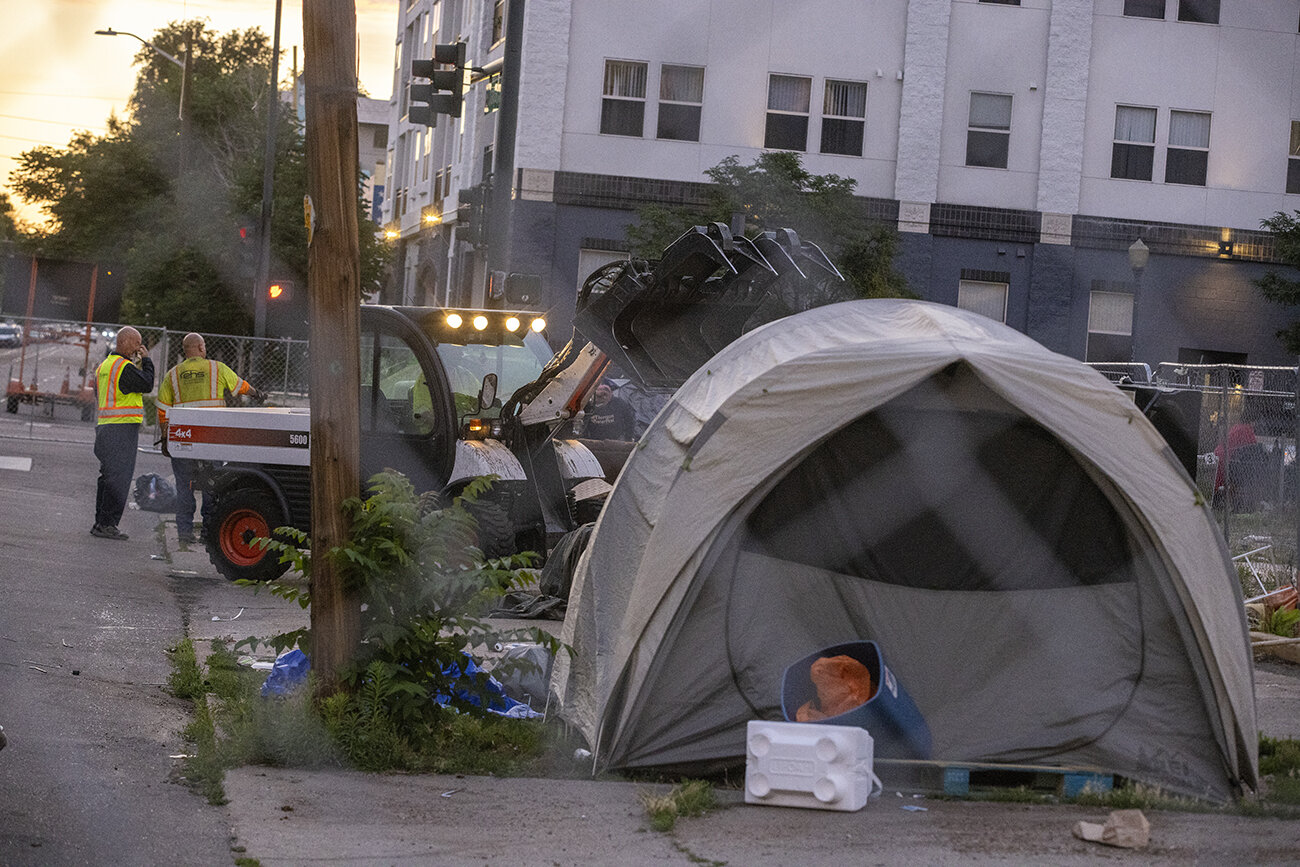Report: Denver Spending Fails to Address Homelessness Tops $434 Million Annually
Photo: Giles Clasen
By Robert Davis
A new economic analysis of homelessness in Denver found that service providers and city agencies within Denver spend approximately $434 million every year to alleviate homelessness, and have little to show for it.
The report looked at budgeted funds for Fiscal Year 2020 and does not include either funding captured in the American Rescue Plan or the Colorado Rescue Plan. It also does not compare Denver’s spending on homelessness with its other municipal services or track how the money distributed to service providers is spent.
However, the report caveats that the “figures only include financial information that was available and do not capture the full array of charitable organizations, religious organizations, public agencies or health care and emergency responders that are dedicated to serving people experiencing homelessness.”
It is part of a three-part study on the economic impact of homelessness in Denver by the Common Sense Institute (CSI), a free enterprise think tank, in partnership with the University of Denver. It attempts to shed light on the web of funding used to address homelessness, both at the local and national levels.
Dave Davila, a CSI board member, said it simply: “The tools we are currently using aren’t working. This report helps us better understand the size and scope of homelessness in Denver and the impact our resources are making,” he added.
Expenditures mentioned in the report range from program costs by city agencies like the police and fire departments to spending from charitable organizations – which makes up half of the total spending in Denver.
Despite the spending, the report mentions that homelessness in Denver has increased by about 25% over the last four years. According to the latest Point in Time Count, the number of people experiencing unsheltered homelessness doubled between 2019 and 2020.
Meanwhile, the data shows there are now 420 families with children under the age of 18 that are experiencing homelessness in Denver which accounts for more than1,400 individuals – nearly one-fourth of the city’s total homeless population.
For the city’s part, it purchased over 1,000 hotel rooms and built two new homeless shelters to make up for the shelter bed capacity it lost due to federal social distancing guidelines, according to a report by the Department of Housing Stability (HOST).
However, Denver still does not have adequate space within its jurisdiction to house all 4,171 people experiencing homelessness on a given night.
Meanwhile, those who either rent or own homes are finding it tougher to stay housed. According to the National Low Income Housing Coalition, Colorado has the ninth-highest housing wage in the country and requires renters to earn at least $27.50 per hour to avoid paying more than 30% of their monthly expenses on housing.
At this rate, workers earning the state minimum wage of $12.32 per hour must work 72 hours per week to afford housing on their own, NILHC data shows.
The situation is just as perilous for many renters in Denver. Even though the city’s minimum wage is $15 per hour, NILHC data shows that renters need to make closer to $25 per hour to afford a one-bedroom apartment. Minimum wage earners who work 40 hours per week need to spend approximately 54% of their monthly income to afford a market-rate rental unit on their own.
Meanwhile, the Department of Labor and Employment’s (DLE) annual wage report shows that the average wages for nearly 40% of jobs in the state do not pay a wage high enough for a worker to afford housing. Professions that fall into this category include food preparation, farming, healthcare support staff, and production jobs.
DLE’s report also shows that several of these occupations experienced wage increases during the pandemic. For example, food preparation workers saw their average wage climb by five percent between 2019 and 2020.
However, experts have cautioned against analyzing the raw numbers as they relate to average wages. Research shows that these increases were caused by the removal of the lowest-wage employees in several industries, thus artificially skewing the averages higher.
Despite the increase in wages, home price appreciation in Denver took off like a rocket as demand for housing increased exponentially.
According to the Colorado Association of Realtor’s affordability index – which measures the ability of the state’s average wages to purchase housing – home affordability in the state dropped by 10% in 2020. This represents the largest year-over-year decrease since 2016.
Over the past nine years, Colorado’s affordability index has dropped from 150 for single-family homes to an appalling 70. For comparison, a score of 100 or higher means that homes are affordable at the state’s median wage.
Denver’s housing market is starting to see significant inventory gains, according to the latest monthly figures from the Denver Association of Realtors (DMAR). However, these gains haven’t slowed the price increases as many analysts anticipated.
The average sales price of a home is now near $625,000 in Denver, a 17% year-over-year spike, according to DMAR.

